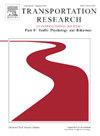改善恶劣天气下道路使用者的感知能力:用于自动驾驶车辆远程助手的增强人机界面
IF 3.5
2区 工程技术
Q1 PSYCHOLOGY, APPLIED
Transportation Research Part F-Traffic Psychology and Behaviour
Pub Date : 2025-05-22
DOI:10.1016/j.trf.2025.05.017
引用次数: 0
摘要
高度自动化车辆(SAE 4级)偶尔需要人工支持。远程助手可以从远处帮助车辆。迄今为止,几乎所有用于远程操作的人机界面(HMI)概念都依赖于车载摄像头来评估其环境。然而,在恶劣天气下,远程助手可能无法仅根据视频流做出决定。我们提出了一种HMI概念,用于使用来自车辆传感器的可视化数据来增强视频流。在一项实验中,34名参与者使用增强HMI概念辅助驾驶自动化左转任务。由于引起雾,能见度发生了变化。结果表明,增强的人机界面有效地支持了参与者的远程协助任务。特别是在有雾的情况下,增强功能减少了碰撞,提高了态势感知能力,并获得了更高的可用性评级。结果表明,增强技术对提高安全性是有效的,特别是在能见度较低的环境中。未来的研究应该检查对工作场所设计的影响。本文章由计算机程序翻译,如有差异,请以英文原文为准。
Improving road user perception in adverse weather: An augmented human–machine interface for remote assistants of automated vehicles
Highly automated vehicles (SAE level 4) occasionally require human support. A remote assistant can help the vehicle from a distance. To date, virtually all human–machine interface (HMI) concepts for remote operation rely on cameras on board the vehicle for assessing its environment. However, in adverse weather, a remote assistant may not be able to decide based on video streams only. We propose an HMI concept for augmenting video streams with visualized data from vehicle sensors. In an experiment, 34 participants assisted the driving automation in a left-turn task using the augmented HMI concept. Visibility was varied by inducing fog. Results show that the augmented HMI effectively supported participants in their remote assistance task. Particularly when foggy, the augmentation reduced collisions, improved situation awareness, and received higher usability ratings. The results imply that augmentation is effective for increasing safety, especially in poor-visibility environments. Future research should examine implications for workplace design.
求助全文
通过发布文献求助,成功后即可免费获取论文全文。
去求助
来源期刊
CiteScore
7.60
自引率
14.60%
发文量
239
审稿时长
71 days
期刊介绍:
Transportation Research Part F: Traffic Psychology and Behaviour focuses on the behavioural and psychological aspects of traffic and transport. The aim of the journal is to enhance theory development, improve the quality of empirical studies and to stimulate the application of research findings in practice. TRF provides a focus and a means of communication for the considerable amount of research activities that are now being carried out in this field. The journal provides a forum for transportation researchers, psychologists, ergonomists, engineers and policy-makers with an interest in traffic and transport psychology.

 求助内容:
求助内容: 应助结果提醒方式:
应助结果提醒方式:


